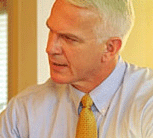With people retiring earlier and living longer, the amount of years you spend in retirement could be longer compared to your parents. The average life expectancy of man is 76 years and for women, 80 years. You could be living in retirement for 20 years or more without receiving a pay check. 
Life expectancy at retirement age 62 is now over 20 years for both males and females. What's more - in another 15 years life expectancy at retirement could well be 30 years.
As everyone knows, the birth rate in Singapore is nothing to be proud of. Currently hovering about 1.2 instead of the population replacement rate of 2.1, it's clear that we have no choice but to be increasingly dependent on foreign workers who could in future outnumber Singapore workers.
Basically, with retirement planning, you want to create a stream of retirement income to see you through your retirement years when your pay check stops coming. Having a stream of retirement income for 20 years or more do require careful and serious planning and the earlier you start the less "catch up" you need to do.
Before retirement, most employers will cover medical expenses through medical insurance. After retirement, however, employees are on their own.
In the good old days with higher birth rates and lower life expectancy, four or five children would financially support perhaps one surviving parent - all grandparents and one parent having passed away.
Now, the combination of poor birth rates and increased life expectancy means that we have one child struggling to financially support two retired parents and four retired grandparents. How can our employees possibly save for their own retirement?
CPF to the rescue? 
The very significant reductions in company CPF contribution rate, the reduction in the salary ceiling, and the pegging of bonus to the salary ceiling have all combined to provide much less from the CPF than we envisaged a few years ago.
To illustrate, if an employee wants to continue their existing living standards throughout their retirement, it is generally agreed that they need a regular income, after retirement, of about 66% of their last drawn salary (e.g. if their last drawn salary was $3,000, they would require $2,000 a month after retirement). Anything less and their living standards will go down.
If we translate employees projected CPF amounts after reductions, we get an income after retirement of about 25% of last drawn salary for low-income employees and below 10% of last drawn salary for high-income employees.
Relying on the CPF alone will ensure a total collapse in living standards - instead of the $2,000 a month, our retiree will be trying to survive on $750 a month or $25 a day to cover food, clothing, travel, medical expenses, etc. And he'll have to do this every day for the next 30 years. If that is not a grim enough prospect then what makes matters worse is the effect inflation will have on this meagre $25 over the next 30 years.
But the fact of the matter is that the average employee - not only in Singapore but globally - does not voluntarily save and even if he does, it will be nothing like what's required to avoid a complete collapse in living standards. Would employees contribute voluntarily to the CPF if they could increase their take-home pay by not doing so? That's why in most countries, it is the norm for companies to establish retirement savings schemes for their employees in addition to the social security. Other countries have seen that this is the best system.
The advantages of a company arrangement are:
- Regular monthly savings are set aside and invested to meet targets whereas this discipline would certainly not be followed by employees on their own
- If all employees are in a single company scheme, administration and investment costs are much cheaper than for employees on their own
- A company is able to obtain expert investment advice whereas investment experts are unlikely to be interested in the small savings of an individual
- It is much more tax effective to save through a company scheme which is approved by Inland Revenue Authority of Singapore (IRAS), under Section 5 of the Income Tax Act, rather than for an employee to try to save on his own out of after-tax money.
Investing
Various investment schemes have invariably involved employees themselves deciding on their own investments from a selected list. The argument is that employees themselves are best able to judge their own risk tolerances and to tailor their investment accordingly. Of course, if the trustees or company decide on the investment manager, they are always open to employee criticism if the investment is not so good.
In addition, getting the employees involved means that the scheme becomes important to them and if employees place value on the scheme they are less likely to job hop from a company. Alternatively, ask yourself what your appetite for risk is. With different financial instruments available to help grow and manage you wealth, you need to decide which ones are most suited to your needs. For example, some unit trusts may be able to offer high returns, but they may also come with high risk. On the other hand, products like principal protected structured deposits may be less risky, but their returns may also be lower. |



